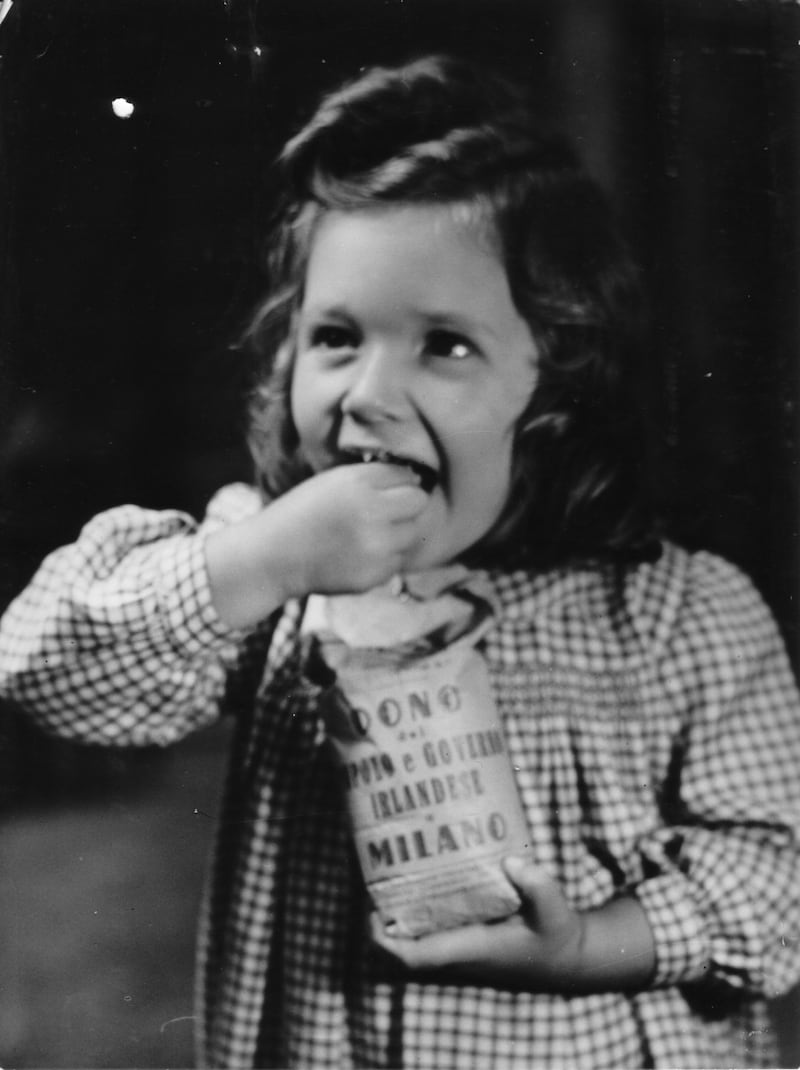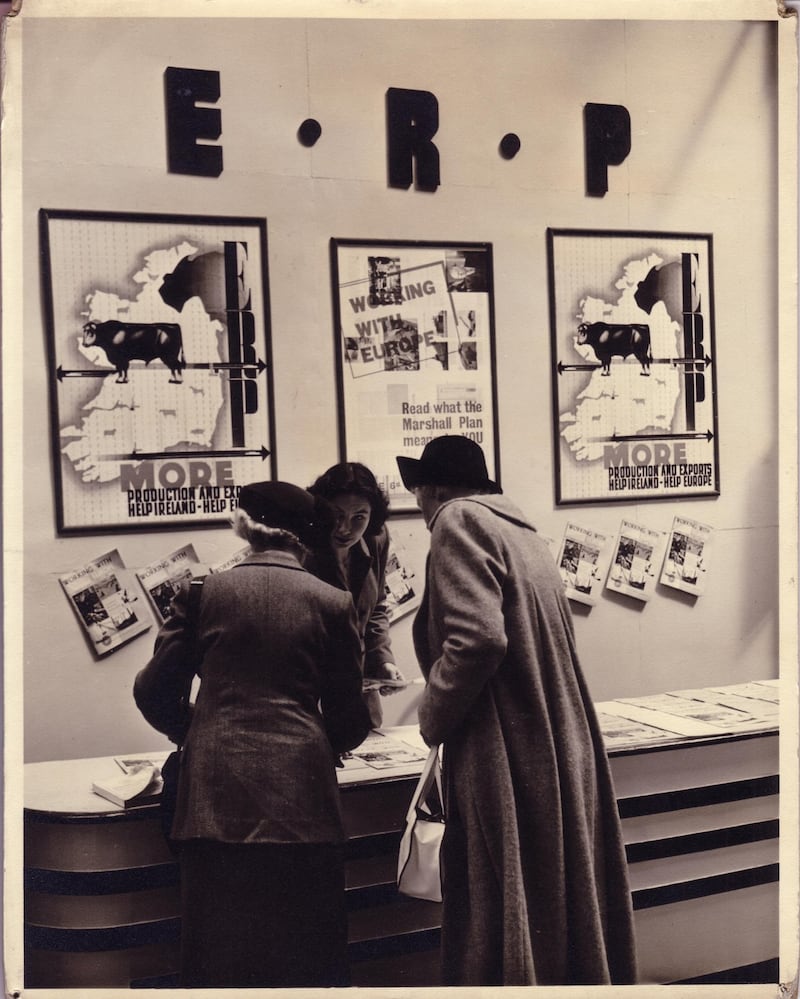We all know that Ireland had to deal with the Emergency. Less well known is that Ireland also had to deal with its aftermath.
Nazi gold, fugitive war criminals, rebuilding Europe, the threat of nuclear war and the growing dominance of Communism: these are among the themes explored in the eighth volume of Documents on Irish Foreign Policy (1945-1948), the open-access version of which is now available online.
Originally published in 2012, this instalment of the Documents on Irish Foreign Policy (DIFP) series runs from the end of the second World War in 1945 to the aftermath of the defeat of Fianna Fáil in the 1948 general election. If DIFP VIII has a central theme, it is how the postwar government of Éamon de Valera sought to pick up the pieces from the most devastating conflict in human history. If, as Fintan O’Toole has recently suggested in these pages, the Irish State does crisis management well, the war years and their aftermath amply illustrate the point.
DIFP is a partnership between the Royal Irish Academy, the Department of Foreign Affairs and Trade, and the National Archives of Ireland. Since 1998 it has published archival documents on Irish foreign relations since 1919 every two years. Vol. XII, covering 1961-1965, will be out later this year.
DIFP is not just a history of Irish diplomacy; it explores Irish history through diplomacy. The range of issues that Irish diplomats were forced to grapple with was remarkably wide. This was inevitable, as a small foreign service had to cover a lot of bases, and no small European country could remain aloof from the upheavals taking place in the world around it. Now that DIFP VIII is free to access online, interested readers can explore how Ireland dealt with the challenges of the postwar era, as experienced and reported by those who lived through and grappled with the rebuilding and reshaping of global politics and economics.
The idea behind DIFP is to publish hitherto unpublished archival documents and make accessible the sources for the history of Irish foreign policy. The documents in DIFP VIII certainly cover the big issues that dominated the immediate postwar period. The aftermath of the Allied reconquest of Europe (which some Irish diplomats witnessed first-hand), the menacing rise of Communism (which obsessed some of Ireland’s more devoutly Catholic diplomats), and the construction of a new international order that ultimately led to the creation of bodies such as the EU and UN all loom large in DIFP VIII.
Anglo-Irish relations (including membership of the Commonwealth) also feature strongly in an era in which Britain’s global role inexorably began to be eclipsed.


These were some of the live issues that framed the world in which Ireland found itself after the Emergency. This unique compendium of primary source material, drawn mainly from the National Archives of Ireland and UCD Archives, explores how during the postwar years Ireland redefined its global position, engaged with a wide range of new multilateral organisations, opened new diplomatic missions and repaired relations with states, in particular the United States and Britain, which had suffered during war. The second half of the 1940s were the years of Ireland’s return to the international system, as it moved into the shadows of the Cold War.
But these were not the only matters that Irish officials had to address: there were no shortage of others that needed dealing with, many of which have been hitherto unnoticed by historians. The immediate legacies of the second World War included explaining to the Allies that there were no significant German assets in Ireland, seeking compensation for bombing of Irish territory, dealing with German internees in Ireland and former Axis diplomats in Dublin, ensuring the removal of British minefields off the southeast coast, and, best known of all in recent years, addressing the position of Defence Forces deserters who had joined the Allied armies.
Then there were the questions that arose looking forward: the admission of refugees, Ireland’s little known postwar aid programme in Europe and the question of whether or not to join the UN. This was a moot point as Ireland’s attempt to do so in 1946 was vetoed by the Soviet Union. Whether various undesirables (such as Oswald Mosley or Lord Haw Haw’s wife) should be admitted to Ireland, religious persecution in Europe, what Ireland as a state should actually be called (the Irish view was, unsurprisingly, Ireland), and even accounts of a shipment of Christmas trees in the US and reasons why not to invite Eva Peron to Ireland: all appear in DIFP VIII.
The documents published in the DIFP series offer a look behind the scenes at how Irish officialdom engaged with the world amidst some of its greatest upheavals, and contain a wide range of revealing eyewitness accounts, and explorations of the thought processes that went into the choices that such officials and politicians ultimately made.
Access to the raw material of history brings the past to life with an unrivalled immediacy. In the midst of one ongoing crisis, the postwar documents we can now make freely available online offer a view into how the world came through a crisis of a very different nature, and how at least some of the threads of a ruined world were picked up to begin anew.
We have now made DIFP volumes covering the critical years from 1919 to 1948 freely available online and we will keep doing so with subsequent volumes as the series continues. Our dedicated website is being redesigned. It will be relaunched later in the year with even more material bringing our coverage into the 1950s. But in the circumstances of the COVID-19 outbreak, we are making DIFP Vol. VIII freely available on our existing platform. As for any resonance with the world of 2020, that is best left for readers to decide for themselves.
The online version of DIFP VIII can be explored online at www.difp.ie. DIFP Vol XII (covering 1961-65) and the new DIFP website (covering 1919-51) will be released later this year. Images reproduced by permission of the Director of the National Archives of Ireland.
John Gibney is Assistant Editor with the Royal Irish Academy's Documents on Irish Foreign Policy series.
















